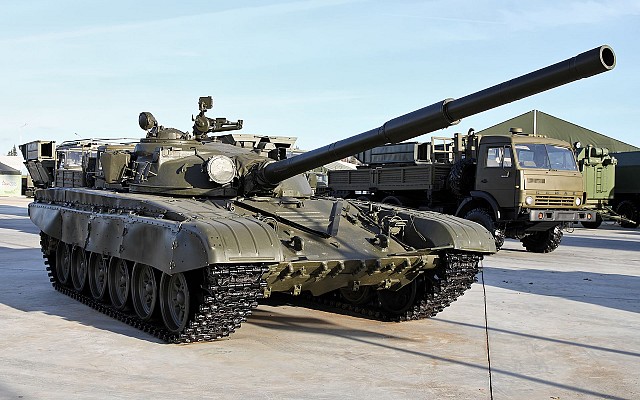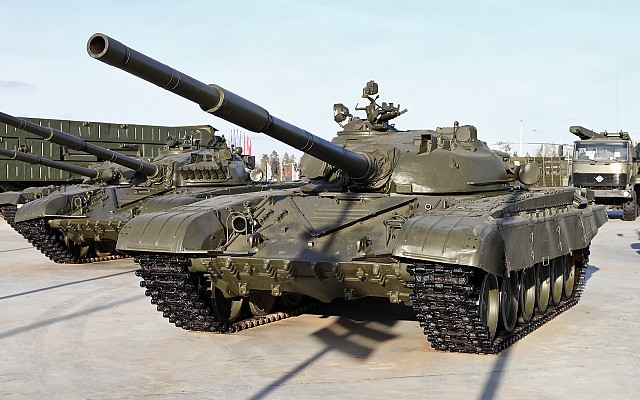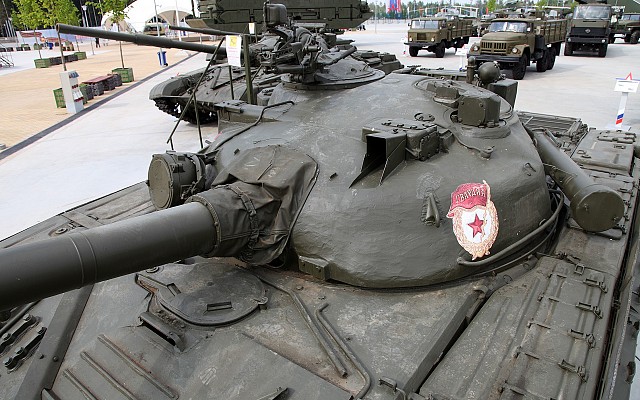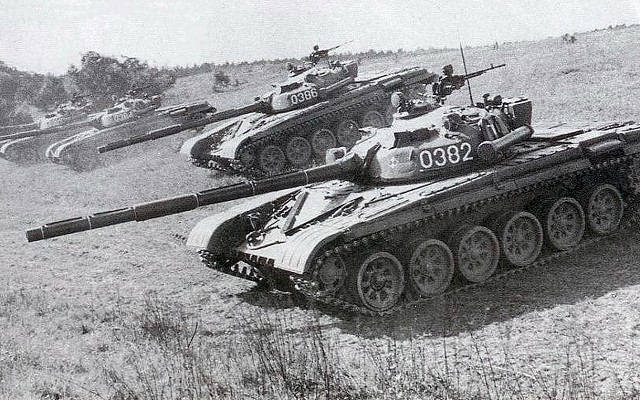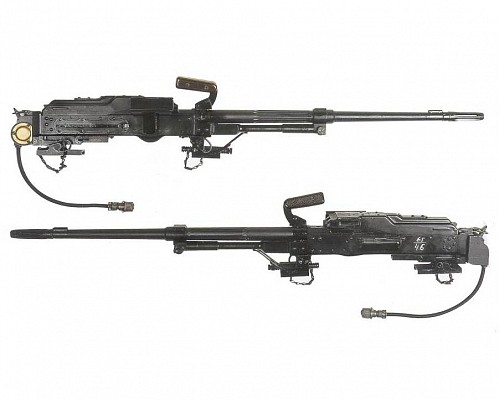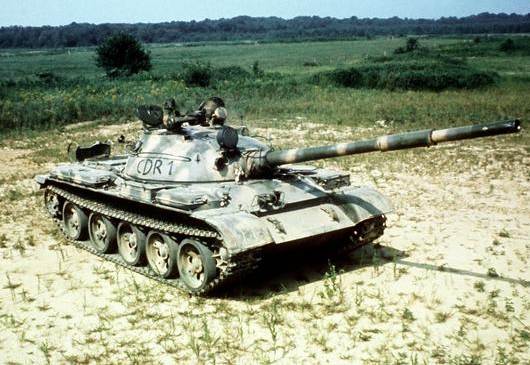T-72 Ural
First generation T-72 tank
Overview
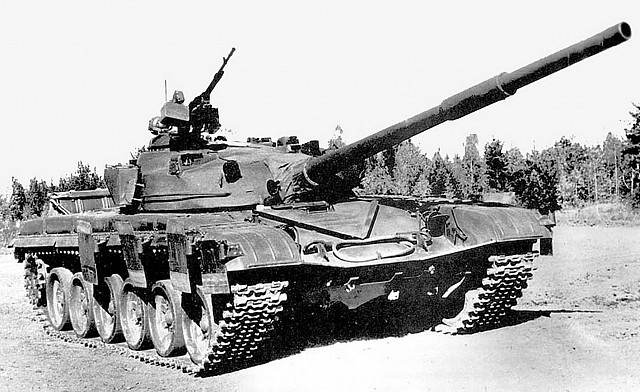
T-72 Ural
Photo showing a T-72 Ural tank in Obr 1975 configuration with "shark gill" metal plate side skirts.
Source: www.bastion-karpenko.ru -
© Copyright lies with original owner
1972 - 1973 (Soviet state trials)
Obyekt 172M (GABTU index)
Description
Introduction
The T-72 Ural is an mid Cold War era main battle tank of Soviet origin. The Ural is the first generation of the famous T-72 series of tanks. The T-72 was designed as a more cost effective alternative to the T-64 while attaining a near similar level of combat effectiveness. Although this was achieved production proved troublesome for the first 5 years. When production was ramped up, the improved T-72A was introduced on the production line.
Design
The T-72 is a major design change from the earlier T-55 and T-62 series of tanks. The T-72 is a new design incorporating more advanced technology. The crew is reduced from 4 to 3 due to the introduction of an automatic loader. Eliminating the standing crew member allows for a reduced silhouette. This makes the T-72 smaller and more difficult to hit, but its cramped layout isn't ergonomic. That the T-72 was originally designed with a low production cost in mind is shown in the basic armor package, dated optics and fire control and lack of defensive aids. The T-72A was an improvement in all these areas while remaining a cost effective design.
Firepower
The T-72 Ural is armed with the smoothbore 125mm 2A26M2 cannon, the precursor to the 2A46. This is connected to an autoloader which holds 22 rounds plus associated charges. Another 17 rounds are stored within the vehicle. The coincidence range finder combined with the older 2A26M2 resulted in mediocre accuracy and barrel lifespan was short. Both issues were remedied in the T-72A. A 7.62mm PKT machine gun is mounted as a coaxial weapon. At the commander's position there is a 12.7mm NSVT heavy machine gun.
Protection
The T-72 uses a variable thickness cast steel turret and welded steel hull. On the first generation there is no laminate turret armor as found on the later T-72A and T-72B. Upon introduction this made the T-72 Ural vulnerable to the latest generation of contemporary 105mm NATO rounds and anti-tank rockets and missiles. For several years distinctive "shark gill" armored plates were mounted on the hull sides. An overpressure NBC system is fitted, but there are no smoke grenade launchers. Some first generation T-72 seem to have been fitted with Kontakt-1 ERA in the 1980's during scheduled maintenance and overhaul.
Mobility
The tracked chassis provides the T-72 with good all terrain mobility. The 780 hp V-46 diesel engine provides an improved power to weight ratio over the earlier T-55. The maximum speed is about 60 km/h on road, and on average 35 km/h in the field. Detachable fuel drums at the rear increase the operational range. The T-72 can ford through water and when using a snorkel rivers up to 5 m deep can be traversed.
Users
The T-72 was first delivered to the Soviet army in 1973 and officially entered service in 1974. Production issues plagued the initial production run, for the first several years less than half of the planned numbers were delivered. This makes the first generation T-72 less common than the T-72A and T-72B. The T-72 was not exported at first, although a derivative for export was produced in the USSR from 1975 onward. However, most T-72 for Soviet export were produced in the Warsaw Pact, described in the T-72M article.
Variants
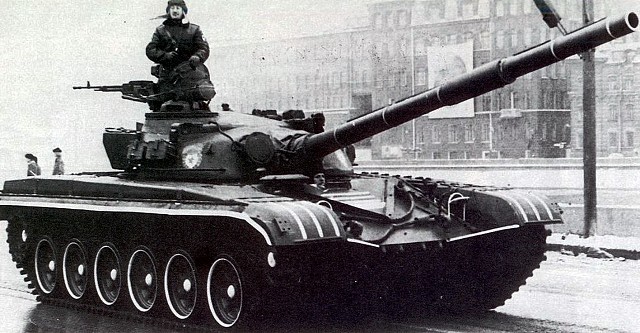
T-72 Ural-1
Soviet T-72 Ural-1 in parade livery. Note the coincidence range finder and 2A46 main gun.
Source: www.bastion-karpenko.ru -
© Copyright lies with original owner
Details
Media
Subcomponents
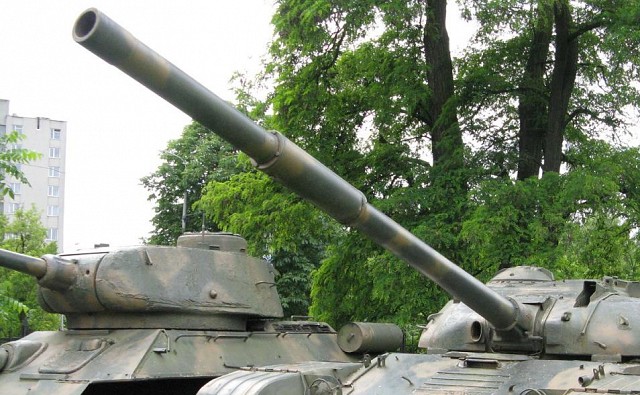
125mm 2A26
Early models of the T-72 Ural were armed with the 125mm 2A26M2 smoothbore main gun.

125mm 2A46
The T-72 Ural-1 was produced from 1976 and was the first T-72 to be fitted with the 2A46 series cannon. The 2A46-1 had a modified breech for use with the T-72 style autoloader.
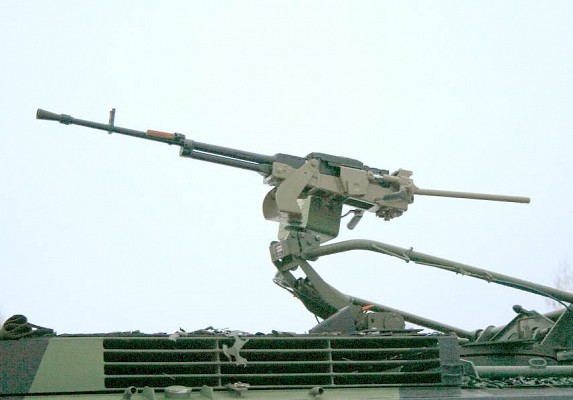
12.7mm NSVT
A 12.7mm NSVT heavy machine gun is mounted at the commander's cupola.
Related articles
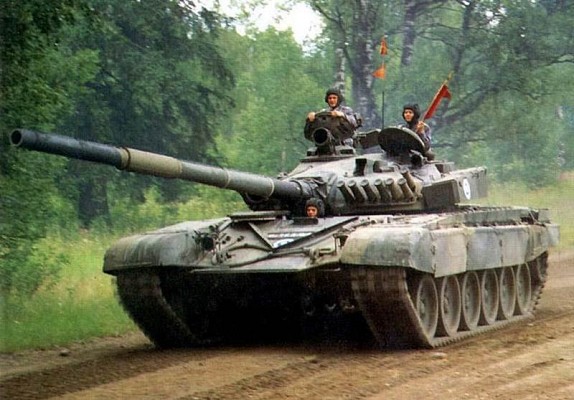
T-72A
The T-72A is the successor of the T-72 Ural on the production line. The T-72A remedied many of the shortcomings of the early T-72.
